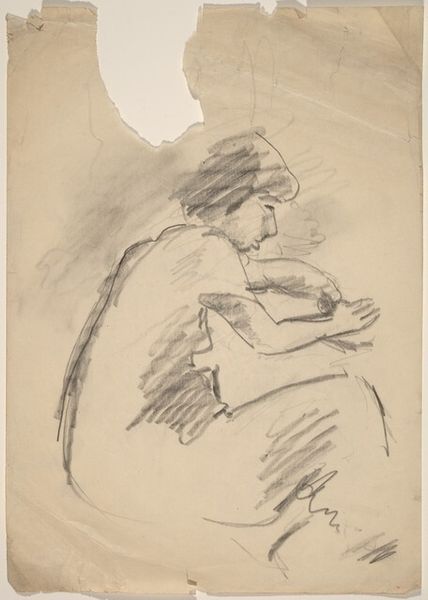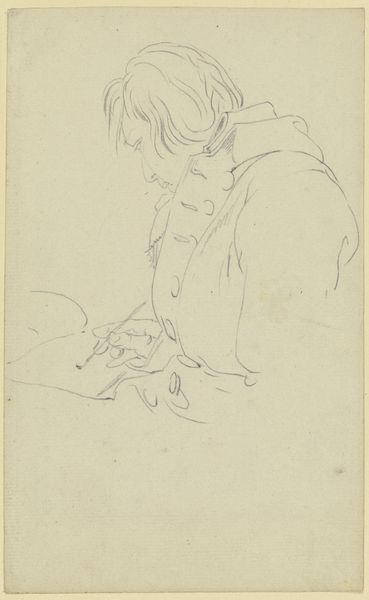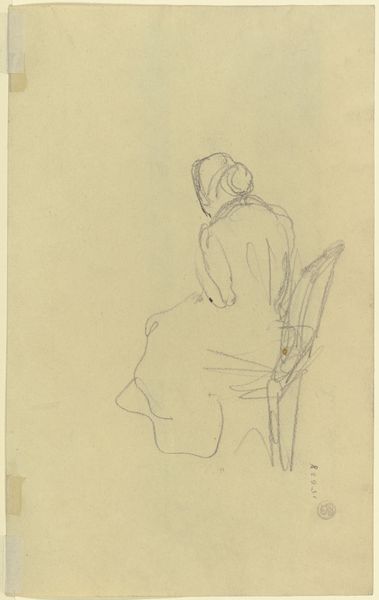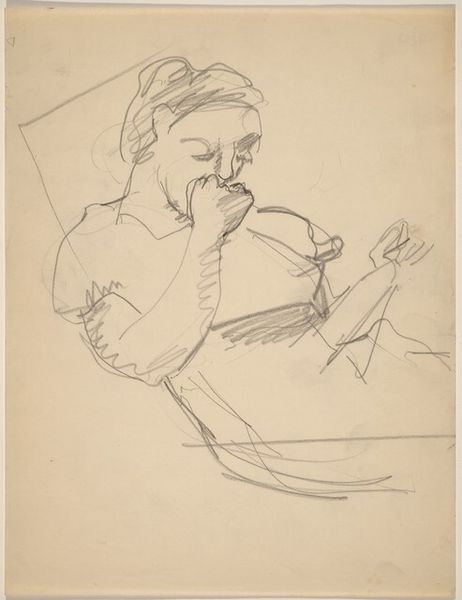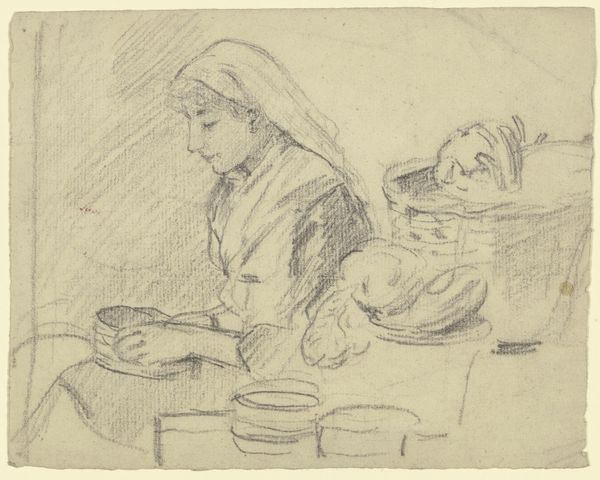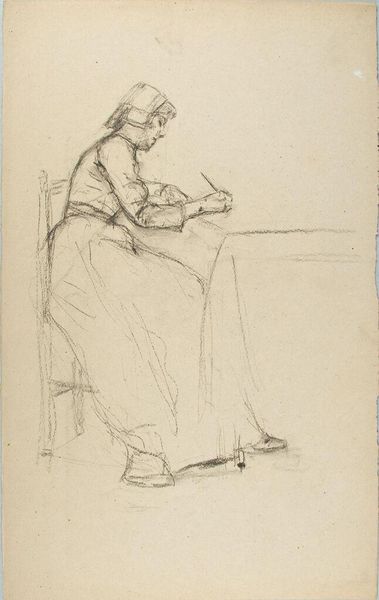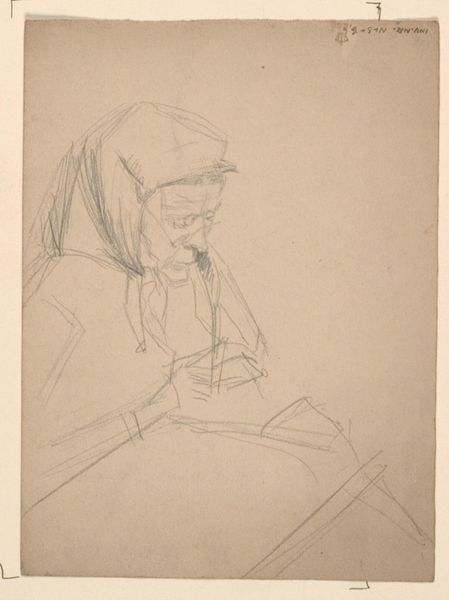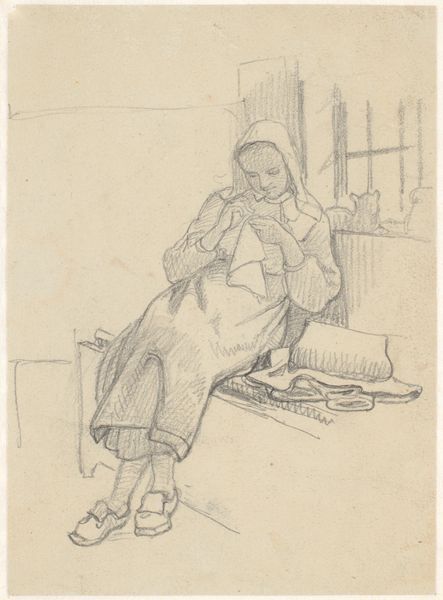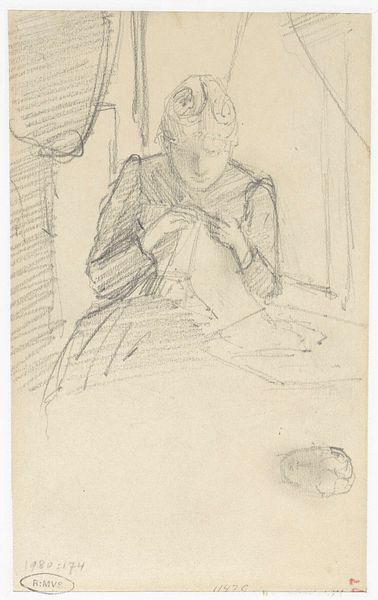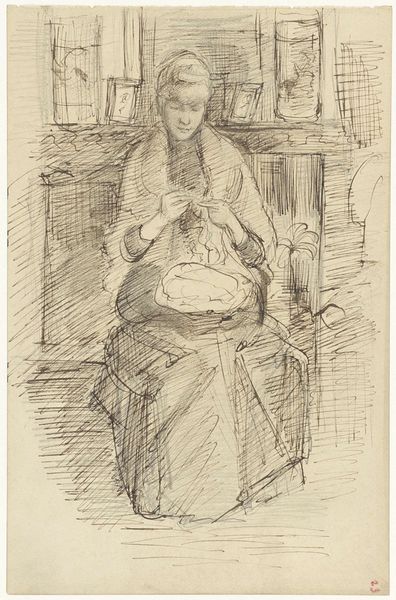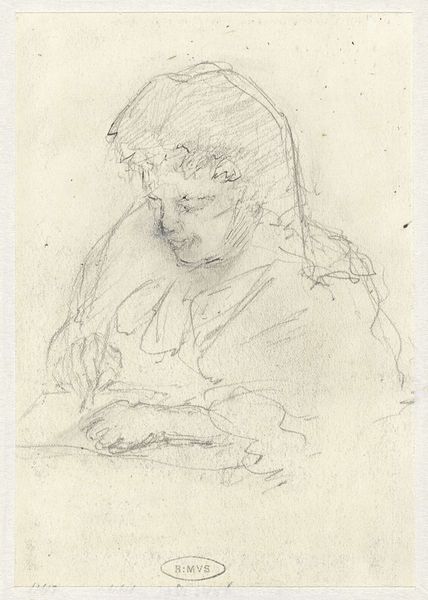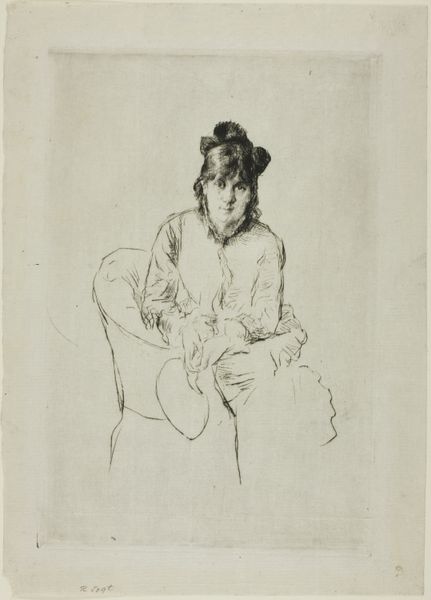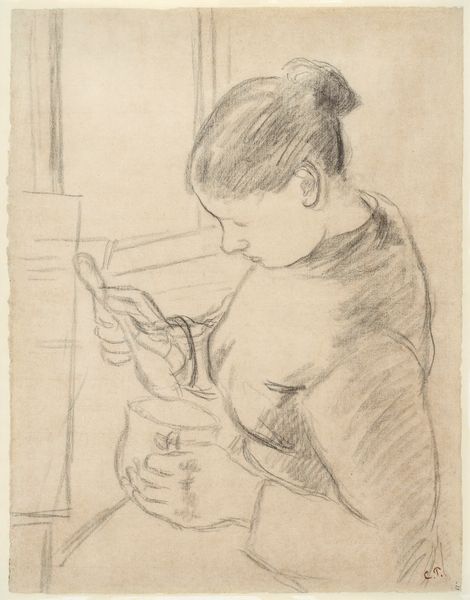
drawing, pencil
#
portrait
#
drawing
#
caricature
#
figuration
#
romanticism
#
pencil
#
realism
Dimensions: height 180 mm, width 151 mm
Copyright: Rijks Museum: Open Domain
Editor: This is "Woman at a Table," a pencil drawing by Andreas Schelfhout, created sometime between 1797 and 1870. It’s currently held at the Rijksmuseum. The immediate feeling I get is one of intimacy, observing this woman so intently focused on what she's doing. What catches your eye? How would you interpret it? Curator: The work immediately impresses as a study in form and line. Note how Schelfhout uses the pencil to delineate planes of light and shadow. Consider the economical strokes that define the woman’s face, contrasting with the more textured rendering of her dress. Editor: So you’re seeing it less as a portrayal of a person and more as an exercise in technique? Curator: Precisely. Observe the compositional structure. The diagonal of the table, bisecting the picture plane, leads the eye directly to the focal point: the woman's hands. And notice the repeated circular forms – the plate, the object she holds – echoing and reinforcing this focal point. How do these choices affect your perception? Editor: I see what you mean. The circular repetition definitely draws my focus. It’s almost like the whole composition is spiraling inwards, keeping my eye glued to her activity. But is there something to read in this very activity? The manipulation of the object... Curator: Speculation beyond visual evidence risks interpretive excess. Formal analysis anchors us. We analyze line, form, and composition. It transcends mere subject matter to communicate, regardless of its inherent significance. Editor: So, from a formalist perspective, the ‘what’ doesn't really matter as much as the ‘how’? It’s more about *how* she's rendered than *what* she's doing. Curator: Precisely. Through the manipulation of artistic elements, Schelfhout elevates a simple sketch to a work of structural integrity, inviting deeper consideration on the fundamentals of its composition. Editor: I guess I came looking for a story and found a masterclass in visual language! I appreciate seeing it that way. Curator: Indeed, by looking beyond subject and into the inherent qualities of the work, new interpretive pathways become apparent.
Comments
No comments
Be the first to comment and join the conversation on the ultimate creative platform.
